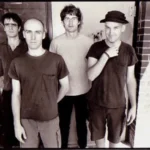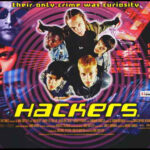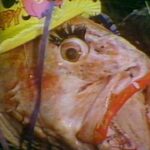 Prologue: Morphin’ Time and Mourning Bells
Prologue: Morphin’ Time and Mourning Bells
It was supposed to be about color, courage, and childhood.
A team of teenagers with attitude. A rainbow of spandex and steel. They flipped, kicked, and shouted catchphrases that would echo in playgrounds and basements for generations.
“It’s Morphin’ Time!”
And with that, they became something more—heroes. Aliens, monsters, and evil moon witches never stood a chance.
But behind the mask of each helmeted hero was something darker. The gloss of fame. The grind of low-budget television. And for some—death. Strange, sudden, violent death.
This wasn’t just a case of one unlucky cast member meeting an untimely end. This was a pattern. A trail of tragedy spanning decades, spreading across different series, different actors, different lives. Car crashes. Suicides. Stabbings. Murder.
Some fans call it a coincidence. Others believe it’s a curse.
But whatever it is, the shadows that follow the Power Rangers are real—and they stretch long and far.
Chapter 1: The Birth of a Legend
The curse begins with a miracle.
In 1993, American television was looking for something new. Kids were aging out of He-Man, growing weary of G.I. Joe, and craving something faster, cooler, more extreme. Enter Haim Saban, an Israeli-American producer known for creating catchy theme songs and cutting corners.
During a business trip to Japan, Saban stumbled upon a wild, psychedelic action show: Kyōryū Sentai Zyuranger, part of the long-running Super Sentai series. It had everything—costumed heroes, giant robots, choreographed martial arts, and monsters made of rubber and chaos.
Saban saw something else: potential.
The plan was genius in its simplicity. Take the fight scenes from the Japanese series—explosions, battles, Megazord mayhem—and splice them with newly shot American footage of English-speaking teenagers. Add a cheesy high school subplot, dub the villain dialogue, and wrap it in a face-melting theme song.
And just like that, Mighty Morphin Power Rangers was born.
Fox Kids greenlit the show, expecting little. But the ratings exploded. The show became an overnight sensation. Within months, Power Rangers merchandise was flying off the shelves, and children were karate-kicking their way through living rooms nationwide.
But the success came at a cost.
Behind the colorful suits were young, unknown actors who’d signed low-paying contracts with no residuals and brutal schedules. They were flown to conventions, hounded by fans, and expected to perform like pop stars—all for a fraction of what they were worth.
They were kids. Some barely in their twenties. And the pressure was just beginning.
Austin St. John (Jason, the original Red Ranger), Walter Emanuel Jones (Zack, the Black Ranger), and Thuy Trang (Trini, the Yellow Ranger) became instant icons. But within a year, cracks began to form.
There were no unions. No protection. No royalties.
And then came the silence—three of the original five abruptly vanished from the show mid-season, written off without explanation. The official story? They “went to a Peace Conference.” The reality was far more human: burnout, frustration, and exploitation.
But for one of them, leaving the show wasn’t the end of her story. It was just the beginning of the end.
Chapter 2: The Original Cast and the First Cracks
In 1994, just a year after the Mighty Morphin Power Rangers phenomenon ignited like a firework in a dry forest, the lights began to flicker behind the scenes.
The three actors who helped shape the identity of the show—Austin St. John (Jason), Walter Emanuel Jones (Zack), and Thuy Trang (Trini)—were gone. To millions of kids, it was sudden. Jarring. Their heroes vanished without a trace, written out of the show with a vague excuse.
But to the actors, it was anything but sudden. It was slow. Suffocating.
“It felt like being famous… but broke.”
Austin St. John would later describe the experience in interviews as being on a “national hit show but earning less than a McDonald’s manager.” The actors were non-union, overworked, and constantly reminded that they were replaceable.
“There were days I didn’t know if I’d get home from set before midnight,” Jones later said. “And if I did, I had to memorize ten more pages of dialogue for the next morning.”
The breaking point came during contract negotiations. St. John, Jones, and Trang approached producers together, asking for fairer treatment and a raise that reflected the show’s massive success. The response was swift: they were recast.
To this day, the show’s creators deny wrongdoing. But fans knew something wasn’t right. The Power Rangers were meant to be a team, inseparable. But now the illusion had cracked, and something darker began to leak through.
For Thuy Trang, the departure was especially hard.
Thuy Trang: The Fallen Tiger
She was the soul of the original team.
Thuy Trang had escaped war-torn Vietnam with her family at the age of 2. Her journey to the United States was harrowing—crowded boats, pirate attacks, refugee camps. When she finally arrived in California, she was driven, smart, and fiercely determined to make a name for herself.
Landing the role of Trini Kwan, the original Yellow Ranger, was a dream come true. Trang became a symbol of strength and diversity. In a show that often relied on shallow stereotypes, she brought depth and heart.
But her time as a Ranger ended early. After leaving the show, she struggled to find major roles. Hollywood wasn’t kind to Asian-American actresses in the ‘90s, and despite her martial arts prowess and on-screen charisma, she was mostly offered background roles or typecast parts.
In 2001, at the age of 27, she was offered a ride to a friend’s wedding rehearsal in San Francisco. She never made it.
The Crash
On September 3, 2001, Trang was in a car with Angela Rockwood (fiancée of actor Dustin Nguyen from 21 Jump Street) and another passenger. Driving on Interstate 5 near San Francisco, the driver lost control of the vehicle. It swerved off the road and plunged over a bank, flipping several times.
Thuy was not wearing a seatbelt. She was ejected from the vehicle and died before paramedics could arrive.
Rockwood was paralyzed. The third passenger survived. Thuy Trang’s body was cremated, and her ashes were scattered in a ceremony attended by friends, family, and castmates—including Amy Jo Johnson and David Yost.
The news barely made headlines. No major obituaries. No retrospectives. Just a quiet end for a woman who once helped launch a cultural empire.
Fans mourned. Message boards lit up with disbelief. Some called it a tragedy.
Others whispered a word that hadn’t yet taken shape:
Curse.
Chapter 3: The Curse Emerges
At first, no one dared say it out loud.
A death. A lawsuit. A sudden disappearance. These things happen—especially in Hollywood. But in the world of Power Rangers, they began to stack, one atop another, in ways that felt… unnatural.
The deeper fans looked, the more they found. Patterns. Parallels. Strange synchronicities that didn’t quite add up. And then came the rumors—unsettling tales from inside the sound stages, from the crew, from ex-cast members who refused to go on record.
Something was wrong on set. Some said cursed. Others said haunted.
And then there was the fan theory that gave it a name: The Morphing Grid Strikes Back.
Dark Energy on Set
The early seasons of Mighty Morphin Power Rangers were shot on a shoestring budget, often in abandoned buildings around Los Angeles, repurposed warehouses, and old lots left to rot. One former grip, who asked not to be named, claimed in an anonymous interview with a now-defunct fan zine:
“The sets always felt cold. Like, literally. Even under hot lights. I remember seeing shadows move when nobody was around. We’d hear things—growls, whispers. We used to joke that Zordon wasn’t the only ghost in the Command Center.”
Another crew member posted on an early message board in 2003:
“There was one prop we used in Season 2—a staff for some monster—I swear, every time we brought it out, someone got hurt. A stunt guy broke his leg. A PA got electrocuted. We finally threw the damn thing in a dumpster.”
It didn’t help that much of the show’s monster footage was lifted directly from Super Sentai—a series rooted deeply in Japanese folklore, often drawing from spirits, demons, and yokai mythology. A few fans went digging into the original Japanese scripts and claimed some of the footage used in the American version was from an episode dealing with vengeful spirits.
Whether or not you believe in spiritual residue, the stories began piling up.
The Red Ranger Curse
One of the earliest fan theories to gain traction in the ‘90s was the so-called Red Ranger Curse. It began with a pattern: strange, often tragic events happening to actors who donned the iconic red helmet.
-
Austin St. John (Jason, MMPR): After leaving the show, he faced financial troubles, lived out of his car for a period, and later was indicted for alleged fraud related to COVID relief funds in 2022.
-
Steve Cardenas (Rocky): Suffered multiple injuries, including a severe back injury that forced him to leave the series.
-
Ricardo Medina Jr. (Red Wild Force Ranger): Would later become one of the franchise’s darkest figures—convicted of killing his roommate with a sword.
-
Pua Magasiva (Red Ranger, Ninja Storm): Died by suicide in 2019. Later revelations showed he had been struggling with anger, substance abuse, and domestic issues.
While other colors had their share of misfortune, the Red Rangers—leaders, icons—seemed to be the ones fate struck the hardest.
Fans began to speculate: Was it symbolic? Or something darker? Was the red suit, the leadership role, cursed?
The Power Coin Theory
In 2007, a Reddit user known only as MondoGrid87 posted an elaborate theory dubbed The Power Coin Theory.
The post has long since been deleted, but screenshots remain. It claimed each of the original six Power Coins—used by the Rangers to morph—was “linked to an ancient metaphysical energy signature.”
Mondo claimed:
“Zordon didn’t create the coins. He found them. Their power is ancient, and it doesn’t come without a price. Every bearer of a coin leaves a psychic trace. When one dies violently, that trace corrupts the energy field.”
He went further, claiming Thuy Trang’s death “contaminated” the Morphing Grid, unleashing a chain reaction of events that spiraled through time and space—touching other Rangers, other series, and even crew members.
Whether believed or dismissed as fan fiction, the theory struck a nerve. People started watching old episodes with fresh eyes, looking for signs, omens, clues hidden in morphing sequences and monster designs.
And then, in 2004, everything changed.
Because one of those Red Rangers—an actor who’d returned multiple times, played heroes, wielded weapons, fought evil—was arrested for murder.
And this time, the weapon wasn’t a prop.
Chapter 4: Skylar Deleon – From Ranger Extra to Murderer
He wasn’t a Power Ranger. Not really.
He wasn’t even a recurring character. His name didn’t appear in the opening credits, and his face is difficult to spot. But Skylar Deleon claimed he once appeared as an extra on Mighty Morphin Power Rangers, in the background of the early episodes—unmasked, unnoticed, just another teen in the crowd.
It was a blink-and-you’ll-miss-it kind of role.
But Skylar wouldn’t stay anonymous for long.
Years later, he would become one of the darkest figures associated with the Power Rangers mythos—responsible for a crime so grotesque, so haunting, that it turned an eerie rumor into full-blown legend.
The Descent Begins
Skylar Deleon was born John Julius Jacobson Jr. in 1979. He changed his name after a rocky childhood marked by instability, alleged abuse, and a desire to leave the past behind. He married Jennifer Henderson in 2002, and the couple had a child.
To neighbors in Long Beach, California, they appeared normal—if not a little strange. A young family, friendly enough. But behind closed doors, they were drowning in debt. Skylar was desperate for money, and that desperation would soon turn deadly.
He began posing as a successful investor, convincing people he had ties to Hollywood and money to spare. The most grotesque of his scams was aimed at Tom and Jackie Hawks, a retired couple in their fifties who were selling their 55-foot yacht, The Well Deserved.
The Murders on the Ocean
In 2004, Deleon and his pregnant wife met the Hawks under the pretense of buying the boat. The couple, looking forward to spending time with their grandchildren, were cautious but charmed. Skylar even brought along a notary to sign the paperwork.
But on the day of the supposed test run, things took a monstrous turn.
Skylar, Jennifer, and two accomplices boarded the Well Deserved with the Hawks—and hijacked the boat.
Tom and Jackie were overpowered, handcuffed, and forced to sign documents transferring ownership of the yacht. Then, they were tied to an anchor and thrown alive into the Pacific Ocean, never to be seen again.
It was a cold, calculated double murder.
The motive? Greed.
The Trial of the “Power Ranger Killer”
When police caught up with Skylar, he spun wild stories. He blamed the accomplices. He claimed the Hawks were “bad people.” But eventually, the truth came out. And when it did, the media exploded.
Tabloids and news outlets latched onto a disturbing phrase:
“Power Ranger Killer.”
Skylar had claimed, repeatedly, that he’d once acted on the show. Whether or not it was true didn’t matter. The association stuck. In the public’s eye, another name had been added to the Power Ranger death list—and this one wasn’t a victim.
He was a predator.
In 2009, Skylar Deleon was sentenced to death. He now sits on death row at San Quentin State Prison, one of California’s most infamous institutions.
As for Jennifer Deleon? She received two life sentences without the possibility of parole.
The case rocked the fandom. Blogs lit up with horrified disbelief. Conspiracy theorists dug in further: was it coincidence that even background extras linked to the show spiraled into darkness?
Or was the curse widening its reach?
The Show Never Acknowledged Him
To this day, the official Power Rangers franchise has never publicly addressed Skylar Deleon. There are no interviews, no disclaimers, no commentaries.
It’s as if they’re trying to erase him.
But fans haven’t forgotten. His name is now whispered alongside Thuy Trang’s, Jason David Frank’s, and Ricardo Medina Jr.’s—only his tale is different.
He wasn’t consumed by tragedy.
He created it.
Chapter 5: Ricardo Medina Jr. – The Sword and the Cell
He was the face of two seasons.
A muscular hero with flowing hair and the brooding charm of a reluctant warrior. Ricardo Medina Jr. played Cole Evans, the Red Wild Force Ranger, in 2002. Later, he returned as Deker, a mysterious antihero in Power Rangers Samurai.
To fans, he was iconic. One of the more mature actors to wear the red suit, Medina brought a rugged gravitas to a show built on camp. Off-screen, he leaned into the fandom—appearing at conventions, signing autographs, embracing the Ranger legacy.
But behind the convention smiles and photo ops, Medina’s story took a dark, irreversible turn.
In 2015, it was revealed that the former Red Ranger had killed his roommate.
And the murder weapon?
A sword.
A Fight at the House in Green Valley
On January 31, 2015, Ricardo Medina Jr. was living in a house in Green Valley, California, with his roommate, Joshua Sutter. The two reportedly had a rocky relationship. Arguments were frequent, tempers flared often.
That day, they got into a heated fight—over what, no one is quite sure. According to Medina, Sutter forced open the actor’s bedroom door after an argument, and Medina stabbed him once in the abdomen with a Conan-style sword he kept near his bed.
Medina immediately called 911. He stayed at the scene. He claimed it was self-defense.
Sutter died at the hospital.
Initially, Medina was released without charges. The media took note. Another Power Ranger in trouble. The same phrase made headlines again:
“Red Ranger kills roommate with sword.”
It sounded like tabloid fiction. But it was horrifyingly true.
Justice Comes Slowly
For a full year, Medina walked free. Fans argued on message boards: Was it self-defense? Was it staged? Was he innocent?
But in 2016, after months of investigation, authorities determined there was enough evidence to press charges. Medina was arrested and charged with murder.
The case revealed chilling details. Prosecutors argued the stabbing was not a sudden act of self-defense but the violent climax of ongoing conflict. The fact that he’d armed himself with a sword—and only stabbed once, cleanly, fatally—made the event seem more calculated.
In 2017, Medina accepted a plea deal. He pled guilty to voluntary manslaughter and was sentenced to 6 years in prison.
He served just over 3 years before being released in 2020.
The Symbolism of the Sword
For fans of the show, the details hit like a gut punch.
The man who once shouted “Wild Access!” and summoned animal spirits to fight evil had killed someone with a literal sword. The most mythic of weapons—often wielded by Rangers in battle—was now stained by real blood.
Was it rage? Was it madness? Was it the Curse?
One fan theory points to a dark symbolic thread. In Power Rangers Samurai, Medina’s second role was Deker—a warrior cursed to fight eternally, soulbound to a sword called Uramasa that fed on blood and sorrow.
Some even joked it was art imitating life.
Others didn’t laugh. They saw a pattern. A man who played a cursed swordsman… later became one.
After Prison
Since his release, Ricardo Medina Jr. has kept a low profile. No convention appearances. No interviews. No public statements beyond a brief apology during sentencing:
“I want to say I’m very, very, very sorry for what occurred. I’m very happy to be here, and I’m very, very, very sorry.”
But for many fans, the damage is done. His legacy as a Ranger will always be shadowed by a fatal act of violence.
Another Red Ranger. Another tragedy.
Another line on the curse’s growing tally.
Chapter 6: Jason David Frank – The Green Ranger’s Final Battle
To generations of fans, Jason David Frank was the Power Rangers.
He wasn’t just the Green Ranger—he was the legend. The one who returned, again and again, transcending seasons, timelines, and even mortality within the show’s fiction. He was the soul of the franchise.
But behind the morphing sequences and martial arts bravado was a man locked in a lifelong battle of his own—one with demons darker than any monster from Rita Repulsa’s army.
And in the end, it was a battle he would lose.
The Face of a Legacy
Jason David Frank first appeared as Tommy Oliver, the evil Green Ranger, in 1993. Originally contracted for only 14 episodes, fan reaction was so explosive that Saban brought him back—first as a hero, then the White Ranger, later Red, Black, and even the Green Ranger again in legacy episodes.
Across Mighty Morphin, Zeo, Turbo, Dino Thunder, and countless anniversary specials, Frank stayed loyal to the brand and to the fans.
He loved being a Ranger.
He also loved martial arts. He founded his own style—Toso Kune Do—and ran dojos across the U.S. He was a fierce advocate for discipline, focus, and positivity. At conventions, he was tireless—signing autographs for hours, posing for photos, encouraging kids to never give up.
But there were signs. Subtle ones, at first. Then louder.
He was open about his battles with depression. He’d struggled with the suicide of his older brother, Erik, in 2001—a pain that never seemed to leave him. His marriage of nearly two decades dissolved in 2022. He was facing business challenges, personal rifts, and a growing weight of expectation.
The Green Ranger had become a symbol. But Tommy Oliver couldn’t save Jason David Frank.
November 2022: The World Stops
On November 19, 2022, while staying at a hotel in Texas, Jason David Frank took his own life.
He was 49.
The fandom recoiled. Shock turned to sorrow, sorrow to disbelief, disbelief to pain. It was one of the few celebrity deaths where fans wept as though they’d lost a sibling.
Because for many, they had.
His role in the series had transcended TV. He was the Ranger who came back. He was the second chance, the redemption arc, the warrior who fought alone but never gave up. He helped children believe they could be brave—even when they were scared. Especially when they were scared.
The man who’d embodied courage, strength, and redemption for nearly three decades had fallen to something he couldn’t fight: despair.
The Curse Tightens Its Grip
Jason’s death wasn’t just another name on a list. It was a punctuation mark. A painful crescendo.
For many fans, this was the moment the Power Rangers Curse became real—no longer whispered in threads or muttered in convention lines, but spoken aloud with reverence and sorrow.
How could someone who meant so much… be gone?
In tribute videos, fans began noticing eerie patterns:
-
In Dino Thunder, Tommy spends multiple episodes trapped in a coma, unable to escape a dream-world.
-
In Super Megaforce, a spectral Tommy appears in a vision, guiding the new Rangers before vanishing.
-
In the 25th anniversary special, he morphs into every Ranger he ever was—as though his journey was closing.
In hindsight, these moments feel prophetic. Like farewells we didn’t recognize as goodbyes.
The Final Legacy
At the 30th anniversary special in 2023, titled Once & Always, the absence of Jason David Frank was palpable. The story revolved around fallen Rangers, grief, and legacy. The producers dedicated it to both Thuy Trang and Jason David Frank—a tribute long overdue, and heartbreakingly timely.
His daughter, Jenna Frank, has since spoken about her father’s legacy, pledging to keep his memory alive. But the grief lingers, raw and unshakable.
Because this one hurt differently. This one took the heart of the franchise.
“What kind of curse takes the strongest one?”
—a fan wrote on Twitter, hours after the news broke.
There’s no easy answer. Maybe it wasn’t a curse. Maybe it was the weight of being a hero for too long, in a world that often forgets the person behind the mask.
But in the eyes of millions, the Curse of the Power Rangers claimed its greatest champion that day.
And nothing has felt quite right since.
Chapter 7: Unexplained Deaths, Missing Rangers, and the Echoes of Tragedy
The main deaths get all the attention: Thuy Trang. Jason David Frank. Ricardo Medina. But there’s another layer to the so-called Power Rangers Curse—a twilight zone of lesser-known actors, mysterious accidents, and careers that vanished without a trace.
A strange haze surrounds this franchise. People disappear. Others die young. Many spiral into obscurity, broken relationships, and substance abuse. Some, after wearing the colors of the morphing grid, never quite find their footing again.
Let’s peel back that veil.
Mauricio Mendoza – The Forgotten Villain
In Power Rangers Wild Force, Mauricio Mendoza played Jindrax, one of the series’ main comic-relief villains. He wasn’t a Ranger, but he was close—appearing in nearly every episode, battling the team, chewing scenery in his demon clown costume.
In 2015, just a few years after Wild Force aired, Mauricio vanished from the convention scene. Fans who reached out online got silence. Rumors swirled—illness? Addiction? Depression?
Eventually, it was revealed that Mendoza had suffered a severe stroke and was left partially paralyzed. He never returned to acting.
His role was energetic, explosive—he practically bounced off the screen. But in real life, something broke. Another life altered. Another performer silenced.
Robert L. Manahan – The Voice of Zordon
The mighty floating head. The sage of Eltar. Zordon was the all-knowing mentor of the original Rangers. But behind the glowing tube, the voice that fans grew up with belonged to Robert L. Manahan.
He died in 2000 of a heart attack, at just 43 years old.
There were no drugs. No scandal. Just a sudden, silent end. He was working in post-production at the time—still involved with the Power Rangers universe.
Fans didn’t even realize he had passed for years. There was no major tribute episode. No acknowledgment from the franchise. Only later, in the deeper corners of fan forums, did the obituary surface.
The man who guided the Rangers for so long… vanished with barely a whisper.
Pua Magasiva – A Shocking Loss from New Zealand
In 2003, Power Rangers Ninja Storm aired with an all-new tone: funnier, sleeker, filmed entirely in New Zealand. At its center was Pua Magasiva, the Red Wind Ranger—a fan favorite for his charisma and charm.
In 2019, Pua was found dead in his Wellington home.
He was just 38 years old.
At first, no cause was revealed. But the truth soon came out: it was suicide.
Later revelations added a deeply troubling layer. Pua had a history of domestic violence, including the abuse of his wife, which he had pled guilty to in 2018. When the court records were released after his death, fans were stunned. Some turned on him. Others expressed heartbreak at the tangled pain behind his final days.
Another Red Ranger, dead too young. Another life touched by violence. Another name on the list.
Erik Frank – The Brother Lost
We’ve mentioned him already, but Erik Frank—Jason David Frank’s older brother—deserves his own moment in this haunting roll call.
Erik appeared on Power Rangers Zeo as David Trueheart, the long-lost brother of Tommy Oliver. The episodes were heartfelt, rare for a show known for monsters-of-the-week. It was the only time Tommy’s Native American heritage was explored, however clumsily.
Off-screen, Jason and Erik were close. Erik wasn’t a regular actor—Power Rangers was his biggest role. After filming, he disappeared from the spotlight.
Then in 2001, at just 29 years old, Erik died.
The cause of death was never publicly released.
Jason never spoke about it in depth. But those close to him say it haunted him. That his return to Power Rangers Dino Thunder in 2004—after years away—was, in part, a tribute to his brother’s memory.
The Curse didn’t just take Rangers. It took their kin.
The Vanishing Rangers
Several former actors have simply disappeared.
Some changed their names, left Hollywood, and cut all ties with the franchise. Others reportedly suffered breakdowns, struggled with addiction, or faded into quiet lives—unable to handle the intensity of sudden fame followed by sudden obscurity.
Consider Danny Slavin, the Red Galaxy Ranger. After the show, he dropped out of public life entirely, resurfacing only briefly for Power Rangers Lost Galaxy: The Return before vanishing again. He now lives a completely private life, reportedly working in law. But he refuses interviews. No social media. No conventions.
Or Michael Copon, the Blue Time Force Ranger. He seemed poised for stardom, but his career stalled after a few supporting roles. He’s since moved into small-budget Christian films and reality shows. Once tagged as a “rising star,” now a footnote.
These aren’t tragedies, necessarily. But they add to the sense that something follows these actors. A pressure. A shadow. A silence.
The Ones Who Got Away
There are those who’ve spoken about narrowly avoiding disaster.
-
Amy Jo Johnson, the original Pink Ranger, left acting and moved to Canada, focusing on directing and music. She has acknowledged the “dark energy” around the franchise, and has often distanced herself from the brand.
-
David Yost, the original Blue Ranger, endured years of on-set homophobia before walking off the show. He later suffered a breakdown and underwent two years of conversion therapy—something he now denounces. In interviews, he’s admitted to having suicidal thoughts during his time on the show.
These are survivors. But they carry scars.
The Pattern
When you pull back and look at the full list—of deaths, disappearances, breakdowns, and quiet tragedies—it becomes hard to ignore the pattern. Something about this show, its legacy, its energy… lingers.
Some say it’s the pressure of early fame.
Some say it’s coincidence.
But others whisper a darker possibility.
What if there really is a curse?
Not one born of magic or myth, but of trauma. A cultural hex, woven through contract disputes, low pay, Hollywood exploitation, the weight of symbolic responsibility placed on children. A show built on violence and heroism, whose stars were often discarded and forgotten.
And what happens to forgotten heroes?
They drift. They fall. They vanish.
Chapter 8: The Curse Evolves – Reboots, Rewrites, and the Haunted Legacy of a Franchise
The Power Rangers were supposed to be eternal. A franchise built to last generations—colorful costumes, righteous morals, Saturday morning simplicity. But as the years have rolled on, a strange tension clings to the property like smoke.
It’s no longer just nostalgia. It’s something darker. A feeling.
A sense that something is wrong beneath the morphing grid.
Despite dozens of seasons and hundreds of episodes, the Power Rangers reboot machine keeps sputtering. Failed projects. Canceled spin-offs. Stars dropping out. Promises made, then broken. And behind the scenes, old ghosts keep returning.
Is it bad luck? Creative fatigue?
Or is the Curse evolving?
The Netflix Curse: Broken Promises and Disappearing Pilots
In 2021, Netflix announced it would become the new home for Power Rangers. The fandom buzzed with hope: this could be the beginning of a shared universe, Marvel-style. A reboot of the original team. High-budget. Gritty. Adult-friendly.
There was talk of a film. A series. A cinematic universe.
By 2023, it was all dead in the water.
Writers attached to the new series walked away. The movie idea stalled. The only new content that surfaced was Once & Always, a one-off legacy special that felt more like a funeral than a fresh start.
Even then, tragedy hovered.
Just months before the special aired, Jason David Frank passed away, confirming what fans feared: there would never be a true reunion.
And behind the scenes, the showrunners admitted that planned appearances had to be rewritten or scrapped due to actor deaths or refusals.
What started as a rebirth became a requiem.
Haunted Reunions: The Absences Speak Loudest
When Power Rangers Once & Always premiered in April 2023, it carried the weight of thirty years of fandom.
But the ghosts outnumbered the living.
-
Thuy Trang’s absence was acknowledged with a moving in-universe death for Trini.
-
Jason David Frank was shown in archival footage—a morphing sequence from the past, now transformed into a posthumous farewell.
-
Austin St. John, the original Red Ranger, was absent due to legal issues involving a COVID relief fraud case.
-
Amy Jo Johnson, the original Pink Ranger, declined to return—later hinting at creative disagreements and an unwillingness to revisit something so emotionally loaded.
It felt less like a reunion and more like a séance.
Fans praised the heart, the emotion—but couldn’t shake the sense that the show was saying goodbye to itself. That the Curse had finally reached the legacy cast.
The morphing grid was glitching.
The Cinematic Reboot That Never Was
In 2017, Lionsgate released a big-budget Power Rangers film. Darker, edgier, loaded with teen angst and surprisingly heavy themes (including a queer Yellow Ranger and a neurodivergent Blue Ranger). It had all the right moves on paper.
But it flopped.
Despite a post-credits tease of Tommy Oliver, plans for a sequel were shelved. The actors moved on. The reboot was buried. And again… fans wondered if something larger was at work.
The film had attempted to modernize the franchise. To inject meaning. But instead of a franchise rebirth, it was a creative dead end—the latest in a pattern of projects that start strong, then fall apart.
It’s like every attempt to evolve Power Rangers hits a wall.
A wall made of old tragedy.
The Fanbase Feels It Too
Spend time in Power Rangers fan communities, and you’ll feel it: the dread, the grief, the stubborn loyalty. The tone is different from other fandoms. Less celebratory. More reverent. Almost religious.
They mourn the dead often.
They debate the curse constantly.
They watch every new reboot with cautious eyes, as though waiting for the next death.
There’s a collective trauma baked into the fandom. Not just because of the actor tragedies—but because of how frequently the show fails to honor them.
No franchise has burned through so many promising actors.
So many broken careers.
So much silence.
Power Rangers and the Specter of Exploitation
In hindsight, the Curse might be less supernatural… and more systemic.
-
Saban Entertainment, which launched the franchise, was infamous for paying actors poorly, despite the show’s massive success.
-
Many of the original cast walked off the show in the ’90s due to unsafe working conditions, low wages, and abusive schedules.
-
There were almost no residuals. No protections. No real support.
It was a machine. And when actors broke, they were replaced.
Is it any wonder that so many fell into depression, poverty, or worse?
Maybe the Curse is real—but not the kind born of spirits or spells.
Maybe it’s the curse of Hollywood’s disposability.
Still, the Legacy Endures
Despite everything—death, scandal, collapse—the Power Rangers keep morphing. New teams. New suits. New fans.
And something about that resilience is… beautiful. Tragic. Haunted.
Kids who watched the show in 1993 are now in their 30s, 40s. They introduce it to their children. They cosplay at conventions. They tattoo the lightning bolt on their bodies. They remember Thuy. They honor JDF. They whisper about the Curse, half in fear, half in reverence.
It’s more than a show. It’s a myth now.
A campy, colorful myth surrounded by real-life shadows.
Conclusion: Can the Curse Be Broken?
Maybe.
Maybe it already is.
With new creators entering the fold, more respect for the franchise’s history, and fans unwilling to let the ghosts go unheard, there’s a glimmer of change.
But the Curse doesn’t live in monsters or swords.
It lives in the way we treat people.
The way we forget them.
The way we expect them to be heroes… even when they’re hurting.
If there’s a path forward, it’s through remembering.
Remembering Thuy Trang.
Remembering Jason David Frank.
Remembering the ones who disappeared, who broke, who faded away.
The morphing grid may be eternal.
But those inside it? They’re fragile. They’re human.
And maybe it’s time we protect them… the way they once protected us.
This post has already been read 110 times!









